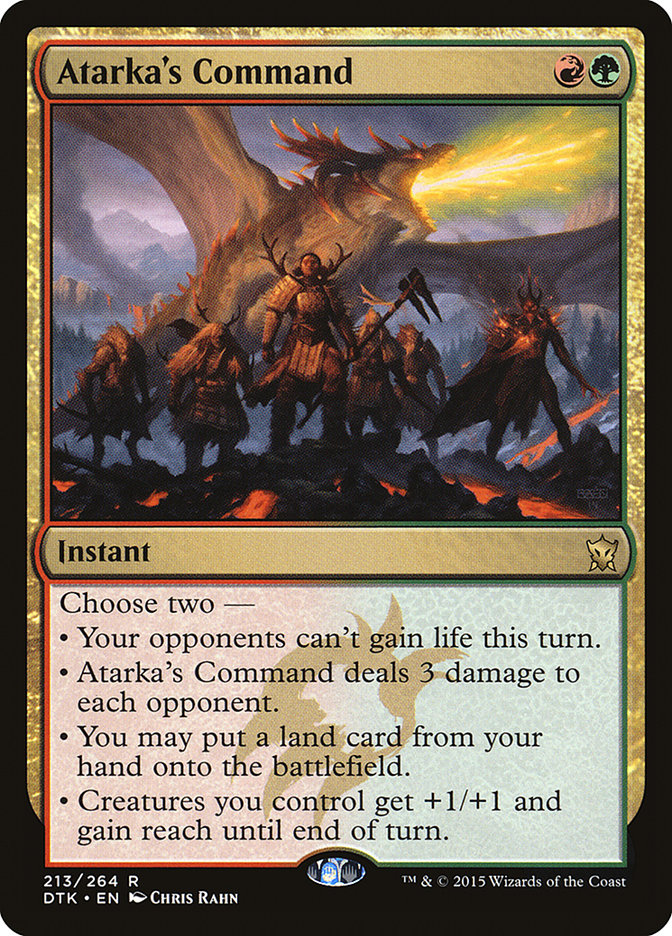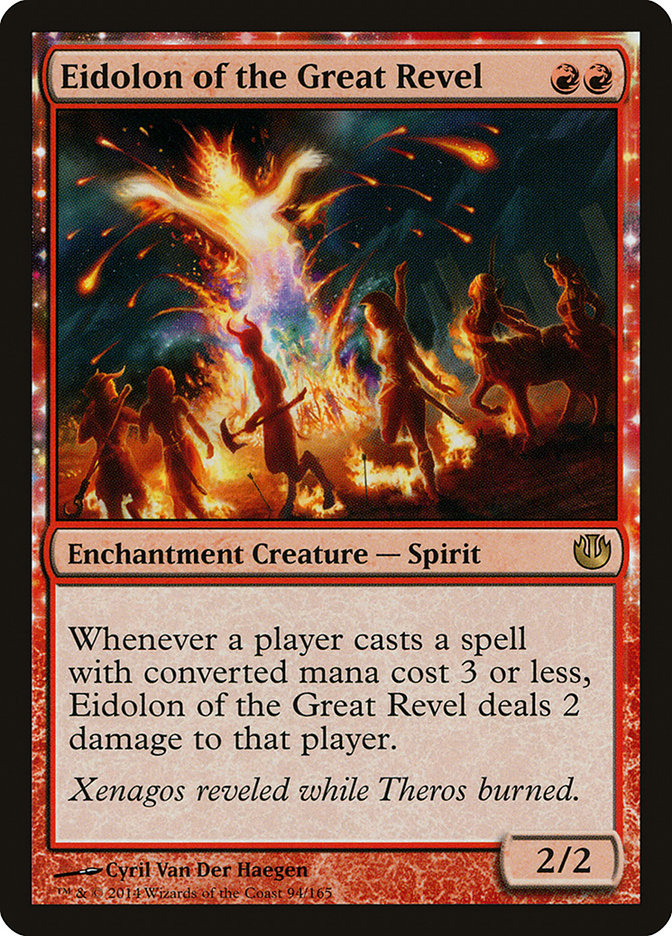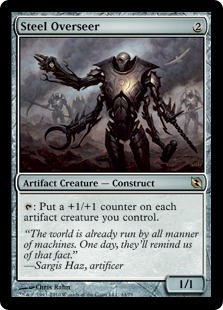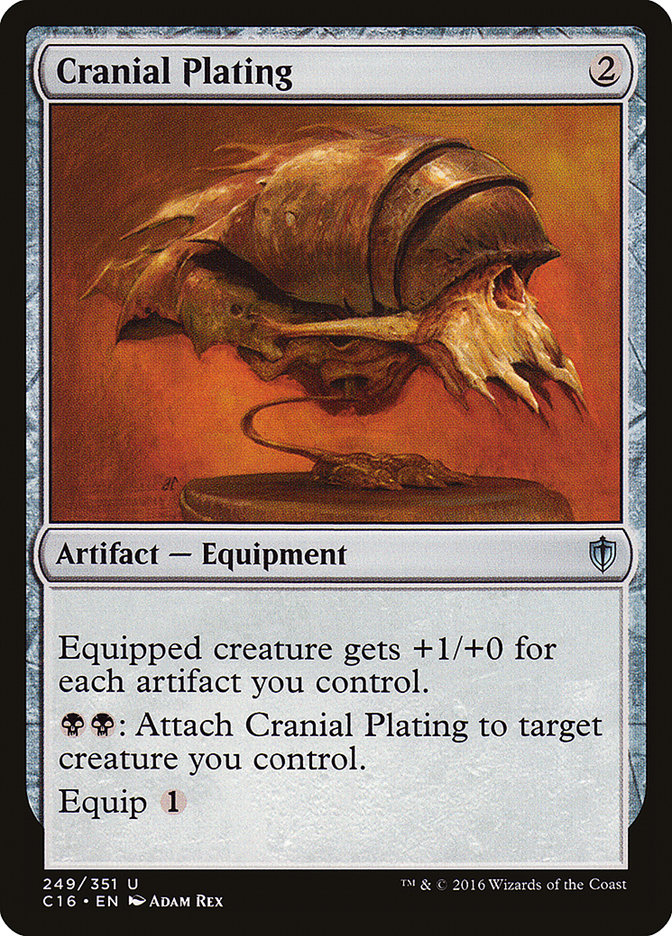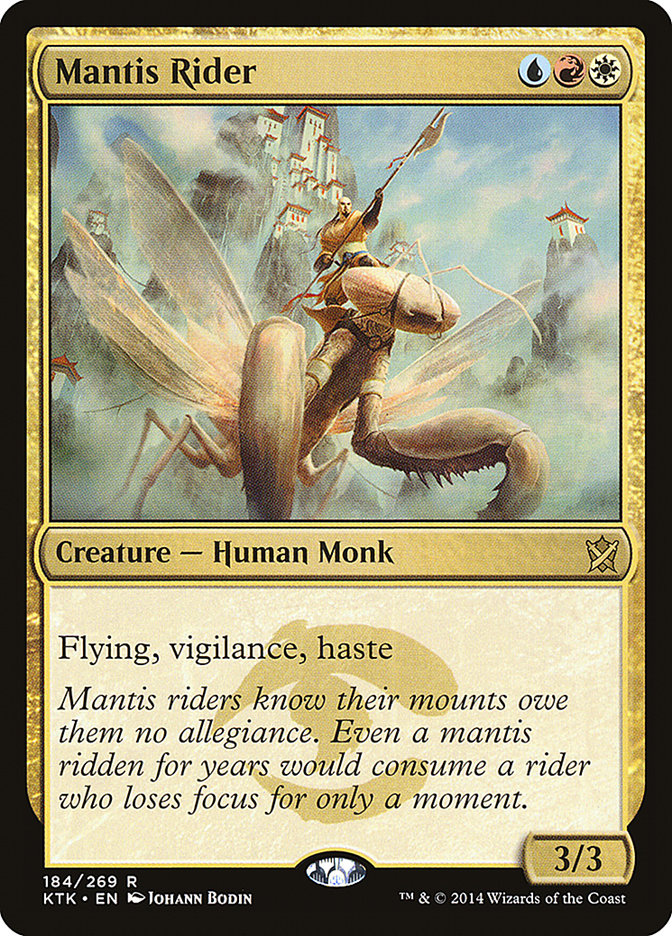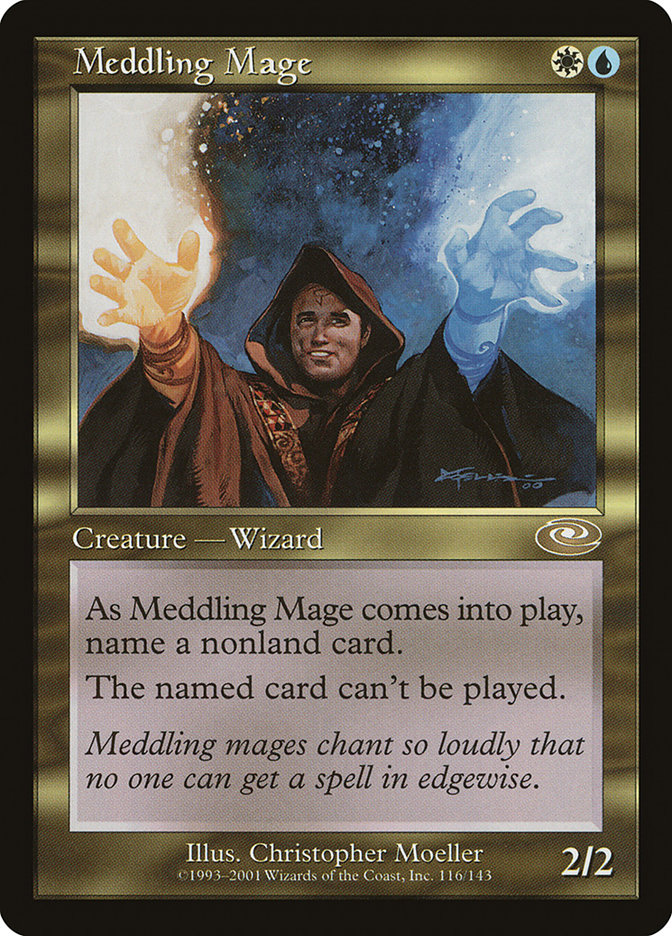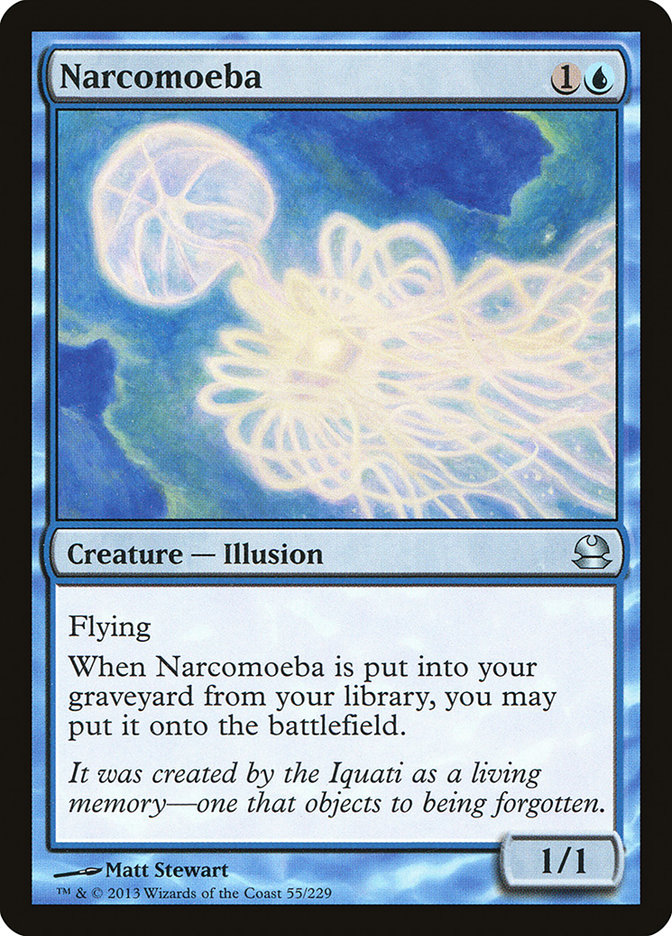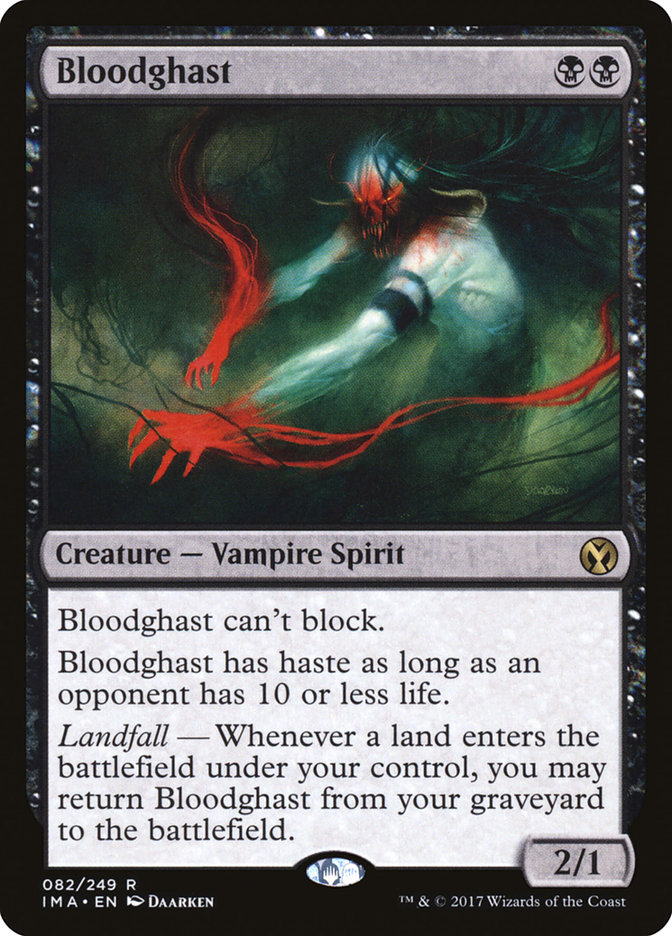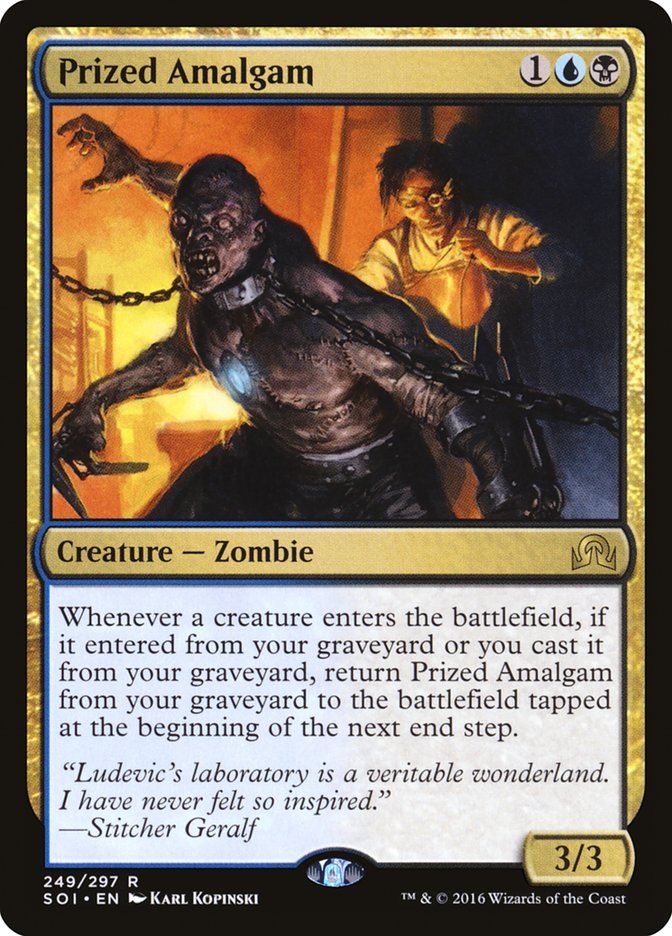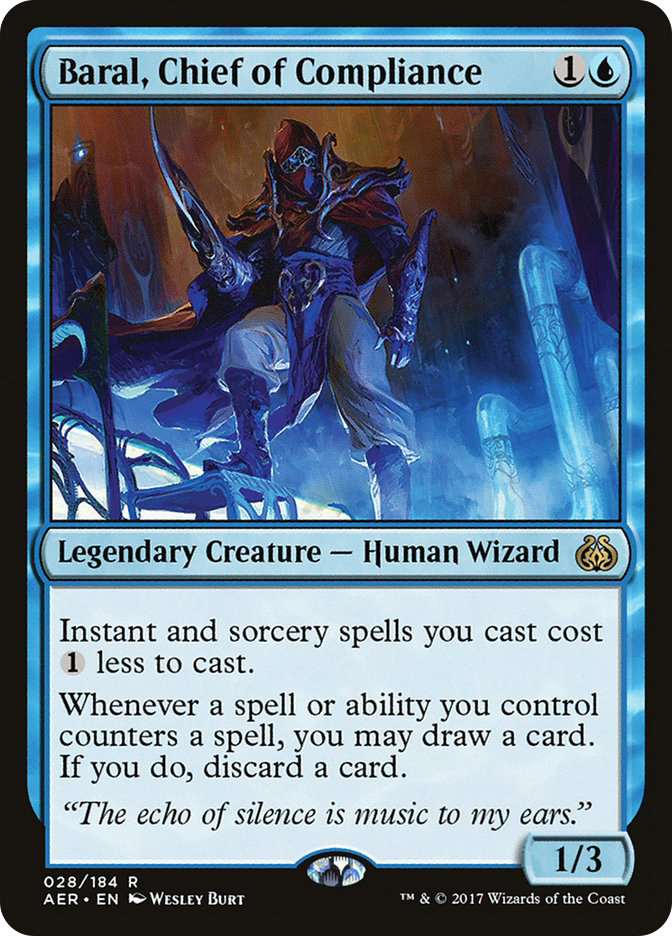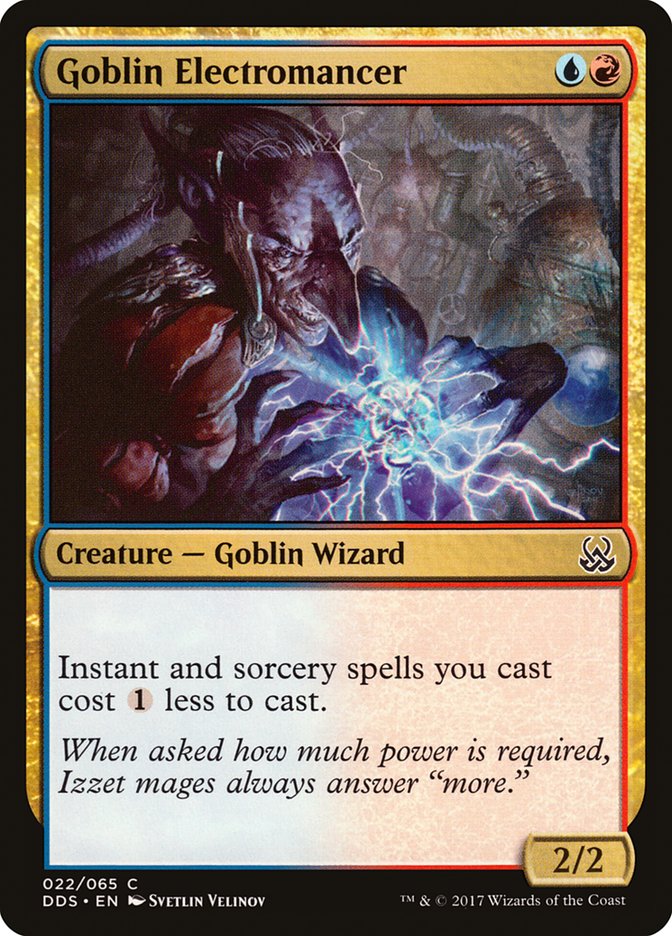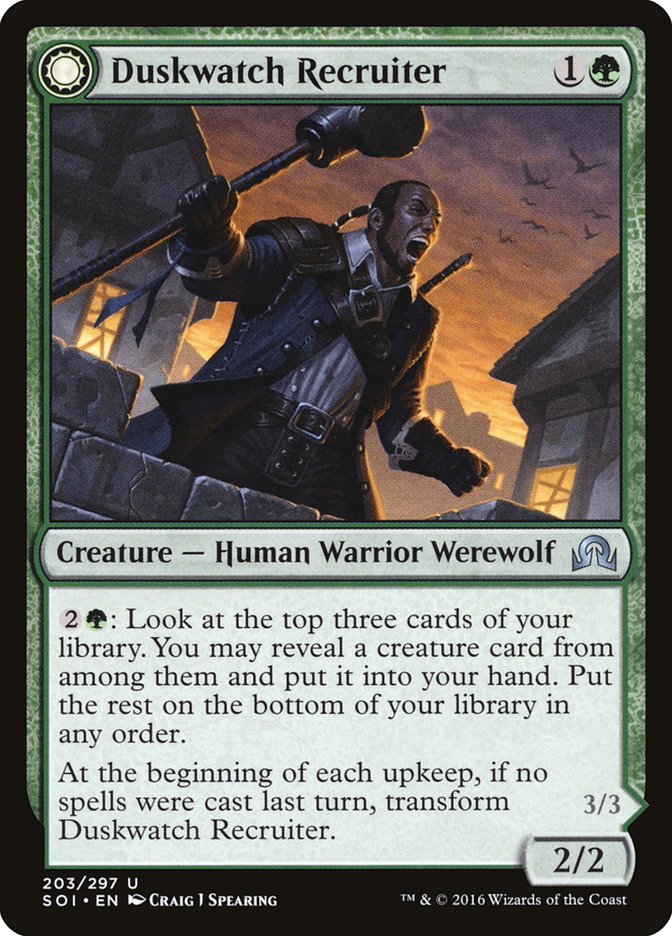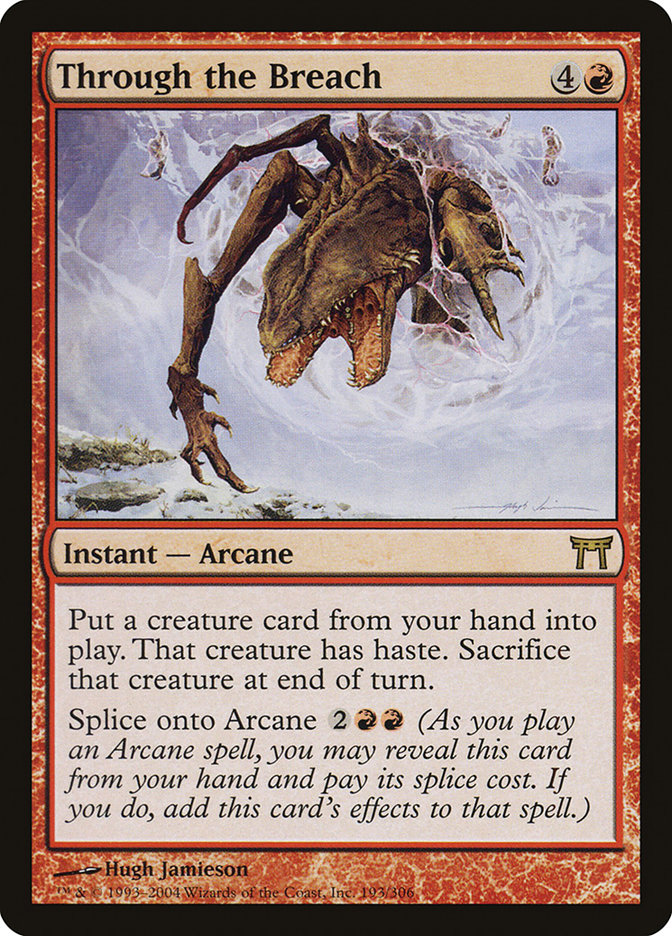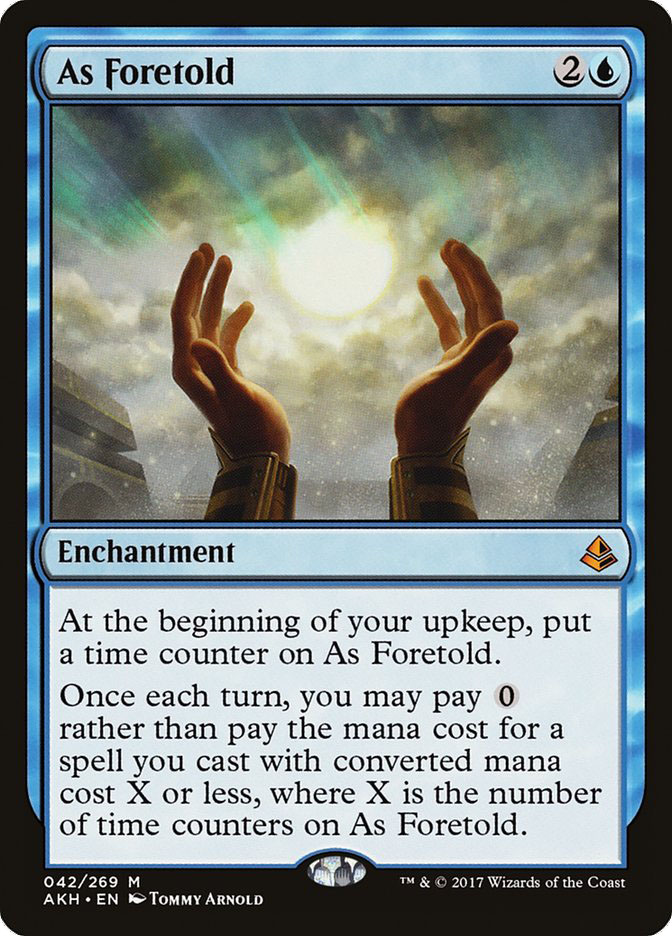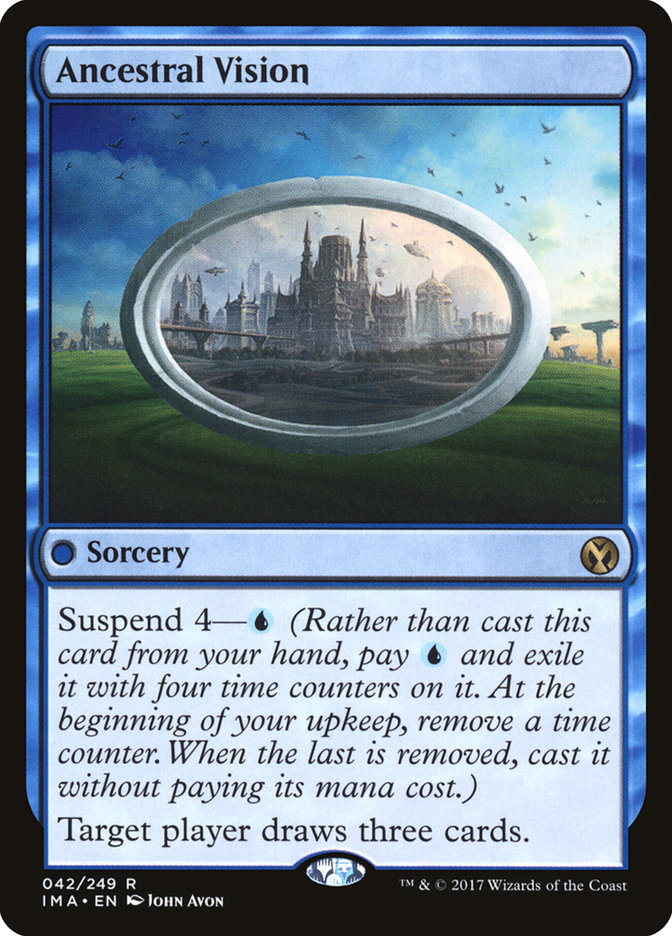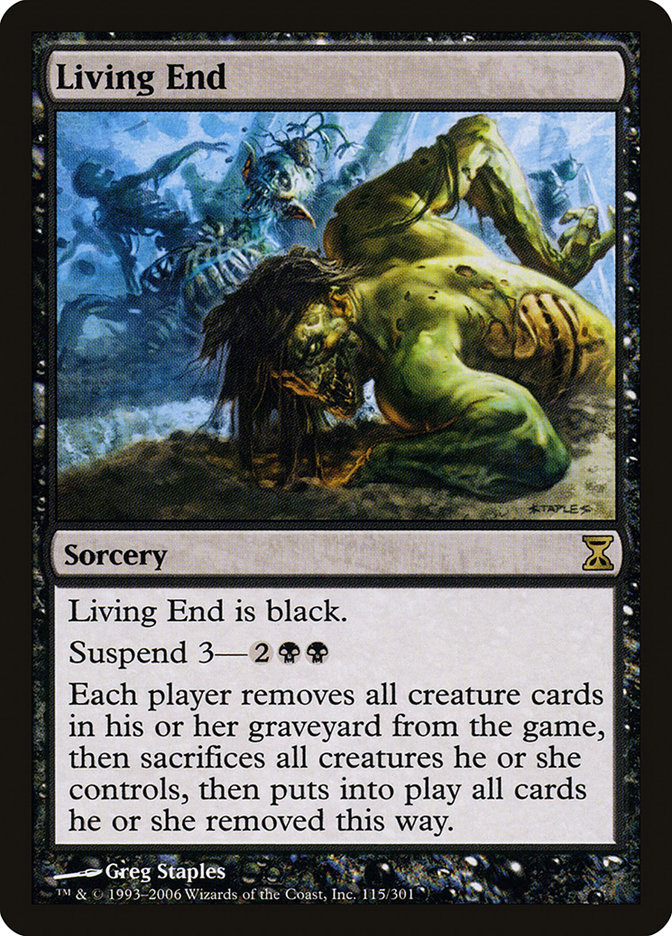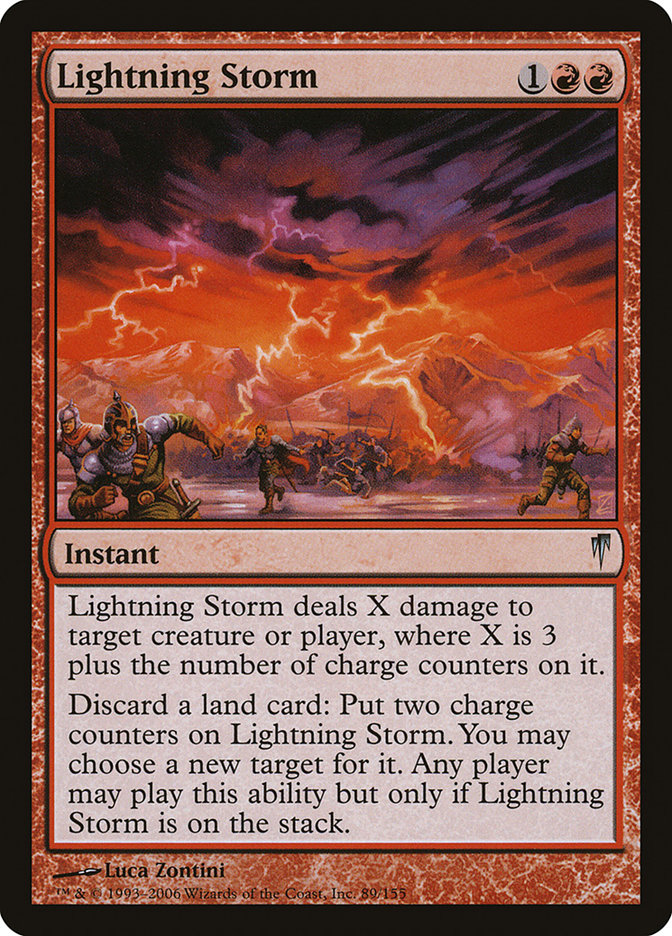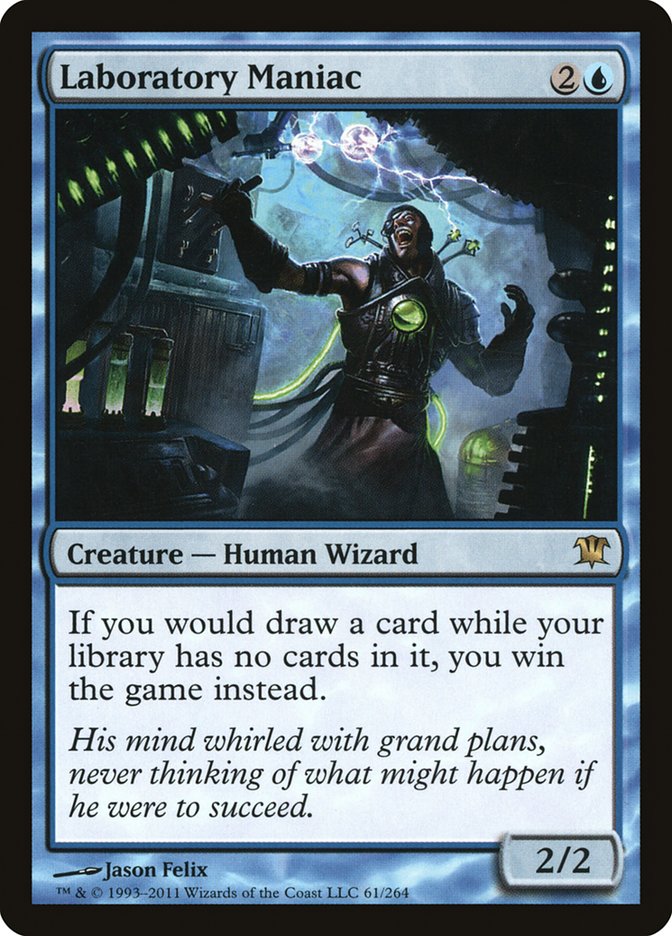We’re back for the third and final chapter in The Modern Compendium, a three-part series where I go over the most popular Modern decks.
Part 1 included the midrange decks of the format, Part 2 had the control and big mana decks, and now Part 3 will be about the aggro and combo decks. These decks are either trying to go under the competition or around it by attacking from a different angle.
Let’s start with the aggressive decks that are always trying to finish the game quickly and then end with the combo decks.
Burn
Creatures (12)
Lands (20)
Spells (28)

Deck Guide:
With the descriptive deck name of “Burn,” it’s probably pretty easy to understand what the deck is trying to do. There’s nothing fancy here, just the best aggressive creatures and burn spells in the format. Before Fatal Push was printed, both Wild Nacatl and Atarka’s Command were staples of the archetype, but now you generally only see R/W Burn lists with Destructive Revelry in the sideboard.
Burn hasn’t received any big upgrade in quite a while, which has allowed many other Modern decks to pass over it in power level, but it’s still a good check on the format for the slower decks. I don’t expect it to get many upgrades anytime soon, either, as it’s hard to print burn spells or creatures better than the ones in the deck. This does make it a good deck to invest in and foil out if you want something that will always be a part of the metagame and will never get a card banned from. The more decks like U/W Control and G/X Tron become popular, the better choice Burn will be to bring those decks back to reality.
Against Everything:
Burn doesn’t really have a “Plan B,” which means that “Plan A” had better be good enough, and in Burn’s case it often is. The creatures in the deck are incredibly efficient and are the best damage sources available, which requires them to be answered immediately.
Searing Blaze is the key card at taking out opposing creatures and is generally used at the first opportunity possible to ensure the landfall clause is satisfied. Generally speaking, the other burn spells usually target the opponent, but there are certainly situations where targeting creatures will be the better tactic. It’s not always best to use all of your burn spells immediately, such as against Grixis Death’s Shadow or decks with counterspells. With Grixis Death’s Shadow, it’s usually best to make your opponent have to lose life on their own in order to deploy their Death’s Shadows while you’re saving your burn spells until they are in range. Against an opponent who is representing a counterspell, it can also be correct to stockpile spells in your hand if you aren’t under pressure so you can try to fire them all off on the same turn, using the first one or two as leverage to help the others resolve.
Affinity
Creatures (24)
- 4 Arcbound Ravager
- 4 Ornithopter
- 3 Master of Etherium
- 3 Steel Overseer
- 2 Memnite
- 4 Signal Pest
- 3 Vault Skirge
- 1 Hope of Ghirapur
Lands (16)
Spells (20)

Deck Guide:
Affinity is similar to Burn in many ways. It has also been around forever, hasn’t received a big upgrade in a while, and only does one thing, but does that thing very well. Affinity’s thing is attacking with artifact creatures, fueled by the power of Steel Overseer, Arcbound Ravager, and Cranial Plating. This is maybe the most difficult aggro deck to play optimally in Modern, with Arcbound Ravager in particular a tricky card to navigate.
You’ll want to have plenty of practice in with this deck, as planning out the future turns is critical to success. The hard work put in to the deck is definitely rewarded, as Affinity is one of the format’s best decks and can win any tournament, even if some games you’ll run into annoying hate cards such as Stony Silence.
Against Everything:
Like Burn, Affinity doesn’t do anything particularly different against the various decks; it just tries to go under them in speed and over them with flyers. Because the deck is so reliant on creatures attacking, the more removal the opposing deck has, the harder it is to win. The good news is the sideboard can be filled with cards of any color, as Mox Opal helps allow the deck to function as a five-color deck or cast spells through the Blood Moon in the sideboard. Over in the maindeck, Inkmoth Nexus provides plenty of wins from spots that look tough, as you only need to deal ten infect damage to win a game instead of the normal twenty damage. This deck has never been my cup of tea, but it rewards practice and good play while also having extremely explosive draws.
Humans
Creatures (36)
- 4 Meddling Mage
- 4 Noble Hierarch
- 4 Champion of the Parish
- 3 Mayor of Avabruck
- 4 Thalia, Guardian of Thraben
- 4 Mantis Rider
- 3 Reflector Mage
- 4 Thalia's Lieutenant
- 2 Thalia, Heretic Cathar
- 4 Kitesail Freebooter
Lands (20)
Spells (4)

Deck Guide:
One of the newest Tier 1 decks on the block, Humans is the real deal with both a fast clock as well as plenty of disruption. Unclaimed Territory and Kitesail Freebooter were the new additions from Ixalan that allowed this deck to rise to prominence. It uses twelve five-color lands to allow it to play the best Human creatures printed in Modern of any color, and the newest versions of the deck have also adopted Phantasmal Image for a Clone effect as well.
Champion of the Parish and Thalia’s Lieutenant give the deck the speed it has, as these two cards can turn into enormous threats if left unchecked. Thalia’s Lieutenant has the added bonus of growing your other Humans as well. The deck is surprisingly disruptive for consisting entirely of creatures, with Kitesail Freebooter and Meddling Mage being quite the one-two punch. Freebooter allows you to see the opponent’s hand and take a spell, and then Meddling Mage can name their best card against you after you know what’s in their hand. This two-card package helps make Humans the anti-combo aggro deck, preying on decks with a key spell they need to resolve. An important part of piloting Humans well is knowing what cards to name with Meddling Mage even when not knowing your opponent’s deck.
Against Aggro:
Like most aggro mirrors, it’s a race to see who can win first, but you do have good disruptive elements against everyone. Besides the Kitesail Freebooter and Meddling Mage interactions mentioned before, Thalia Guardian of Thraben helps slow down spell based decks such as Burn, taxing them for each spell they cast. Against creature decks, you have Reflector Mage to slow them down and can use Aether Vial to put Reflector Mage in at instant speed to bounce haste creatures or creatures with a Cranial Plating attached. Finally, Thalia, Heretic Cathar does a wonderful job at slowing down your opponent, making the opponent’s creatures enter the battlefield tapped and not able to block immediately.
Against Midrange/Control:
Some of these can be your toughest matchups, as a bevy of removal spells can beat your creature-only strategy. Your opponents will have to have plenty of different removal spells, however, as Meddling Mage can shut down the best one at the time. Sorcery-speed removal is usually worse against the deck because of Aether Vial, making relying on Wrath effects problematic for opponents.
You’ll also want to keep a Mantis Rider in your hand to cast after a control opponent uses a Supreme Verdict or similar card, as it can deal the last remaining points of damage. Even against some of the matchups that look tough on paper, such as Jeskai Control, you’d be surprised at how often Humans can get there and barely win games you wouldn’t think it would win.
Against Combo/Big Mana:
This is where knowing the format and what to name with Meddling Mage is so crucial. Naming Grapeshot, Ad Nauseam, or Living End can leave some decks drawing to only a few outs, allowing you to capitalize unless they have the immediate answer. Counters Company and Elves can get around Meddling Mage by using Collected Company and Chord of Calling to set up their combos, making those matchups much harder to win, which is why we see Grafdigger’s Cage as a common sideboard card for the deck now.
Big mana decks can have an edge over Humans, as the spells they are casting at the top of the curve can outclass the creature aggro deck, but there isn’t much time to cast them. Humans puts the onus on the big mana decks to have a very good hand in order to cast something impactful early in the game while fighting through the disruptive elements of Humans. It’s certainly possible, but overall Humans usually has the edge.
Dredge
Creatures (23)
- 2 Golgari Thug
- 4 Stinkweed Imp
- 4 Narcomoeba
- 4 Bloodghast
- 4 Prized Amalgam
- 4 Insolent Neonate
- 1 Haunted Dead
Lands (21)
Spells (16)

Deck Guide:
Dredge is another creature-based aggro deck, but it uses the graveyard to put creatures directly onto the battlefield. It uses Faithless Looting and Cathartic Reunion to get creatures with the dredge mechanic in their graveyard and to use them instead of drawing cards. Besides the recursive creatures that are relentless at putting pressure on you when playing against Dredge, you also have to worry about the Life from the Loam / Conflagrate combo that is always looming. Conflagrate turns the full hand of lands that you can acquire each turn with Life from the Loam into a devastating burn spell, clearing out blockers or going straight at the opposing player. It’s what helps turn this sometimes explosive deck into a consistent aggro deck. Dredge requires you to play Magic a different way, making it a difficult deck to pick up and pilot, especially in paper.
Against Everything:
You’ll want to mill over as many Narcomoebas, Bloodghasts, and Prized Amalgams as possible, and as early as possible.
These three creatures are your main threats that will do the majority of damage throughout a tournament, and you may never cast a single one! They are all very weak cards for the mana requirement when cast, but when they cost zero mana and enter from the graveyard, it’s a better deal. When sideboarding, you need to keep the engine of your deck intact, meaning you can’t take too many cards out or bring many in at a time. Most graveyard hate cards are artifacts or enchantments, but some are creatures too, such as Scavenging Ooze, which is why you’ll see Abrupt Decay as a vital sideboard card for the deck.
U/R Gifts Storm
Creatures (8)
Lands (18)
Spells (34)

Deck Guide:
The most influential combo deck of the format, U/R Gifts Storm can win as early as Turn 3 with a good amount of regularity and has plenty of card selection to find a way to win any matchup given enough time. The goal of the deck is to cast as many spells as possible in one turn, followed by either Grapeshot to kill the opponent or Empty the Warrens to create tons of Goblin tokens. In order to do this, Past in Flames is a key card that allows you to cast all of the spells in your graveyard, which helps provide the critical mass to make storm effective.
This deck has almost singlehandedly made early interaction vital for the format, with Baral, Chief of Compliance and Goblin Electromancer as must-answer threats on Turn 2. If your deck can’t interact with them, you’ll most likely be dead the next turn, so playing decks without early interaction is ill-advised. U/R Gifts Storm is absolutely a deck you need to have a plan for heading into your next Modern tournament.
Against Everything:
Just like with aggro decks, combo decks are looking to use the same gameplan against every opponent. To what speed will of course depend on the specific game, but the end goal of using Grapeshot or Empty the Warrens is the same. The more interaction your opponents have, the more you need to rely on Empty the Warrens, as achieving a large enough storm count for Grapeshot will be difficult. Decks that do damage to themselves like Grixis Death’s Shadow, however, can require a much smaller storm count for Grapeshot and therefore have it be more reliable. With Meddling Mage from Humans being a part of the metagame, you’ll want to either have some sort of interaction in the maindeck for it or another win condition besides just Grapeshot.
With one of your two creatures on the battlefield, it’s possible to win with only one extra mana if you have a couple of Rituals and a Manamorphose, meaning casting a creature on Turn 2 into a removal spell isn’t always correct. Being patient and seeing if your opponent taps out on their next turn can be the difference in the game, as you can play a third land, cast a creature, and win from there. No need to untap with your creature on the battlefield here. Pieces of the Puzzle is a key sideboard card for the interactive matchups, as it can help refill your hand while also digging for Past in Flames. We can see here that Eli Kassis also used the Madcap Experiment and Platinum Emperion combo in his sideboard, but that’s not a combo I’m sold on for the deck moving forward.
Counters Company
Creatures (30)
- 4 Birds of Paradise
- 3 Eternal Witness
- 4 Devoted Druid
- 4 Kitchen Finks
- 4 Tidehollow Sculler
- 1 Noble Hierarch
- 1 Viscera Seer
- 1 Scavenging Ooze
- 2 Duskwatch Recruiter
- 1 Walking Ballista
- 1 Rhonas the Indomitable
- 4 Vizier of Remedies
Lands (22)
Spells (8)

Deck Guide:
Another Turn 3 combo deck built around two-drops, Counters Company is looking to untap with a Devoted Druid on the battlefield, resolve a Vizier of Remedies, and then use Devoted Druid to add an arbitrarily large amount of mana to their mana pool. From there victory can come in a variety of ways, but most commonly with Walking Ballista, which is usually found with the help of Duskwatch Recruiter.
So unlike U/R Gifts Storm, you need to untap with your Devoted Druid in order to use it for your combo, and you only have four Devoted Druids. The good news is you also have Collected Company and Chord of Calling to help find the Devoted Druids, plus a deck full of small creatures that can turn sideways to win games without having to combo. Also, you have a back-up combo with Kitchen Finks, Vizier of Remedies, and Viscera Seer that allows you to gain an arbitrarily large amount of life and scry as much as you want. This gives Counters Company much more flexibility than other combo decks with multiple plans and angles of attack.
Against Aggro:
Besides having hands that can allow you to combo out your opponents as early as Turn 3, your backup plan is wonderful to have against aggro. Kitchen Finks buys you plenty of time against aggressive decks and singlehandedly makes your Burn matchup favorable. The flying creatures from Affinity are tough to deal with, but thankfully they don’t interact with your combo very well. The same thing can be said for Humans, where you’ll want to have an answer for Grafdigger’s Cage post-sideboard.
Against Midrange/Control:
These are your toughest matchups, as they will have plenty of answer for your combo. Playing a fair matchup with the cards in the deck is difficult, as many of the creatures are small and fragile on their own. Collected Company and Eternal Witness are crucial to give you the card advantage to grind with these decks, as the best way to win is to outlast them. Voice of Resurgence is a key sideboard card to come in and help you grind, with Fulminator Mage and Tireless Tracker being other good options that are available.
Against Combo/Big Mana:
You don’t have very good interaction yourself, so in combo mirrors it’s simply a race. Most combo decks can’t beat the arbitrarily large amount of life you can gain, so that combo is usually just as good as the other one. Big mana strategies usually don’t have as much interaction on Turn 2 for your Devoted Druid, making those matchups favorable for you. You don’t need the backup grind plan here. Just try to combo as soon as possible and hope it’s good enough.
U/R Breach
Creatures (8)
Lands (23)
Spells (29)

Deck Guide:
Another newer deck to the format, U/R Breach is the long-awaited heir of Splinter Twin. Instead of using Deceiver Exarch and Splinter Twin as the win condition, U/R Breach is looking to put an Emrakul, the Aeons Torn onto the battlefield with a Through the Breach, annihilating the opponent’s battlefield. This two-card combo is surrounded by the traditional efficient tempo spells that blue and red provide, as well as Blood Moon to try to lock some opponents out of the game. Some people like to splash a third color in the deck as well, even if it’s just for sideboard cards like Tarmogoyf.
Against Aggro:
You’re basically a control deck that has a combo finish in these matchups, but Game 1 you need to find the combo early, as you won’t have all the time in the world. Remand does a much worse job at slowing down opponents who are playing one- and two-mana spells, so they are upgraded for various sweepers post-sideboard. The Madcap Experiment and Platinum Emperion combo can win games against Burn and Affinity without Inkmoth Nexus. Humans is overall a tough matchup for the deck with their fast clock and disruption for the combo, but they are vulnerable to Blood Moon without an Aether Vial. Their creatures can get too large for Lightning Bolt or Anger of the Gods quickly, which is another challenge in the matchup.
Against Midrange/Control:
The less countermagic the opponents are playing here, the better for you. You can sit back and trade resources all day as you look for the combo pieces, waiting patiently until Emrakul, the Aeons Torn can swoop in and win the game. A matchup like G/W Company that has no disruption will be a lot easier for you than Grixis Death’s Shadow.
The biggest problem with playing Through the Breach and Emrakul, the Aeons Torn is that both cards do nothing in your hand without the other one. Therefore, each time a Through the Breach is countered, it is effectively like countering two spells from the hand. Between the discard spells, counterspells, and large threats that are hard to handle with burn spells, Grixis Death’s Shadow is a very tough matchup for U/R Breach, and the more popular Grixis Death’s Shadow becomes, then the harder it is to pull the trigger on U/R Breach.
Against Combo/Big Mana:
Your matchup against other combo decks will be similar to your matchup against aggro decks. You take a controlling role until your able to find your combo, and of course the earlier the better. Depending on the type of combo deck, whether creature- or spell-based, you have good interaction between removal spells and counterspells in your maindeck and sideboard. The big mana matchups, however, are generally pretty good, as they won’t have the interaction for your combo and your counterspells are all very effective, especially Remand. U/R Breach does a good job of keeping decks like Tron and TitanShift in check, so if you have a metagame filled with the big mana decks, then this could be the deck for you.
Mono-Blue Living End
Creatures (14)
Lands (20)
Spells (26)
- 2 Serum Visions
- 4 Remand
- 4 Ancestral Vision
- 4 Living End
- 4 Cryptic Command
- 4 As Foretold
- 2 Supreme Will
- 2 Search for Azcanta
Sideboard

Deck Guide:
Yet another new kid on the block, Mono-Blue Living End is looking to be the upgrade to the Jund Living End decks of old. Living End is used as a one-sided Wrath of God while returning the creatures you cycled to the graveyard to the battlefield. Instead of having to fill the deck with cascade spells and nothing that costs under three mana, As Foretold allows you to free up space for interaction. Like you can expect from mono-blue decks, said interaction is mostly countermagic, which can help slow your opponent down or force through your game-ending spells. I’m not completely sold that monocolored is the only way to go, and maybe the next evolution will be a U/B deck with some removal or discard. For now, though, this deck still looks very promising moving forward.
Against Everything:
There aren’t really multiple gameplans here against various strategies, but although this is more on the combo end of the spectrum than control, Mono-Blue Living End can still play a very good long game against interactive decks.
As Foretold is the true key card of the deck, as it allows you to start casting Ancestral Vision and Living End for free, but even without it, the deck can interact well with any opponent and cast the creatures for face value. Search for Azcanta and Cryptic Command are two incredibly powerful cards, with the former finding a home in just about every blue deck these days and the latter the biggest reason to stay monocolored.
The fastest decks of the format, such as Burn and U/R Gifts Storm, can give you trouble if you aren’t able to interact well enough early. Such decks have been on the decline recently, but watch out for them if you’re picking this deck up. Again, maybe adding black for Fatal Push and Collective Brutality can help out those matchups enough, and with Modern, it’s not too difficult to play a second color. Nimble Obstructionist is a nice sideboard option that can stop anything from an Oblivion Stone to a Relic of Progenitus, surprising some opponents who thought they were safe.
Ad Nauseam
Creatures (4)
Lands (20)
Spells (36)

Deck Guide:
This is one of the fairest combo decks out there, as it hardly ever wins before Turn 4 and has minimal interaction for the opponent. These two facts are reasons I don’t ever expect it to become a widely played deck, but there are still plenty of very good matchups for Ad Nauseam. The goal of the deck is to use Ad Nauseam to draw the entire deck and then cast Lightning Storm to deal lethal damage to the opponent. The deck is filled with cantrips to make sure you have a high probability of finding both Ad Nauseam and an Angel’s Grace or Phyrexian Unlife by Turn 4, but to make room for all of the cantrips, there is a lack of interaction. Thankfully, both Angel’s Grace and Phyrexian Unlife are powerful cards that many decks have difficulty defeating on their own.
Against Everything:
You cast Lightning Storm and kill your opponent with it. Although most people play Laboratory Maniac as a second win condition, not everyone does, and we see Dan Musser here with only one win condition in the entire deck! Better hope it’s good enough!
When you do draw your deck with Ad Nauseam, you’ll have access to multiple Pact of Negations to help allow the Lightning Storm to resolve, so you don’t have to worry about a counterspell from the opponent. Early discard, on the other hand, can ruin your day, so you may have to mulligan a good hand that has Lightning Storm in it if it could get Thoughtseized away. The faster the format, the worse for Ad Nauseam, but some of the most popular decks of the format such as Burn, Eldrazi Tron, and TitanShift are incredibly good matchups for Ad Nauseam.
***
This marks the conclusion to my three-part series, The Modern Compendium, but even this isn’t close to all of the decks in Modern, which is the great part about the format. I covered over twenty of the most popular archetypes, but there are many more new decks popping up every day. Still, hopefully this has been a good reference for players trying to find a new deck they would enjoy, or for newer players to the format to get familiar with some different archetypes.
The New Year is almost upon us, and with it come more and more Modern Opens on the SCG Tour as well as the first Modern Pro Tour in almost two years. It’s an exciting time, and although the holiday break has been nice, I can’t wait to get back to playing tournaments!


